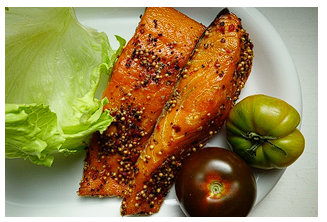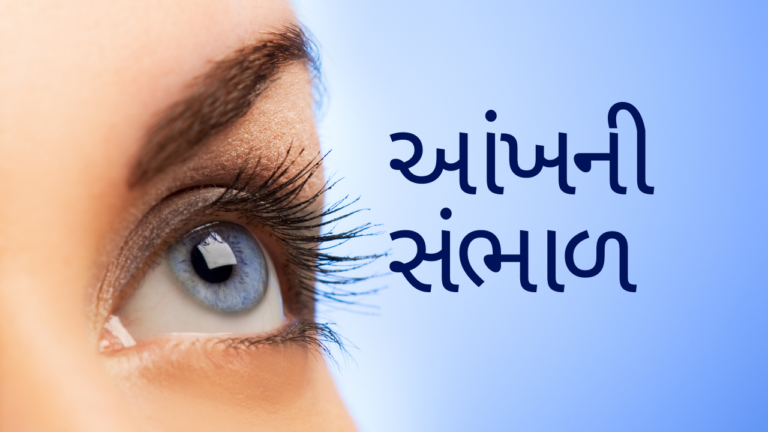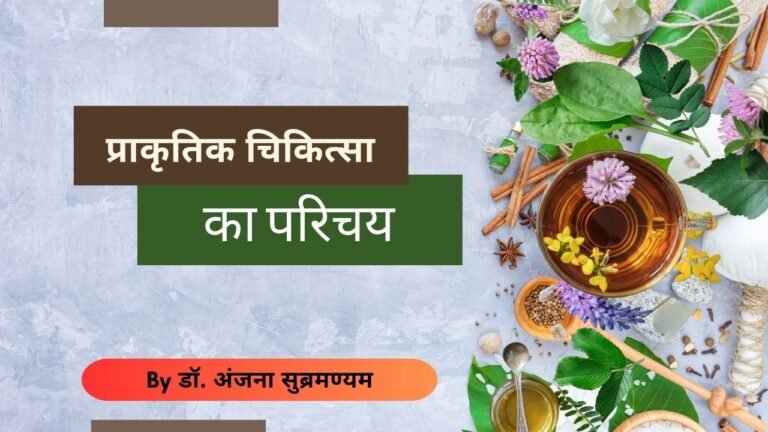HYPERTENSION
INRODUCTION

Hypertension refers to abnormally elevated blood pressure in the arteries. Blood pressure is the pressure exerted by circulating blood upon the walls of arteries when the heart contracts to pump it.
Normal BP: 120/80 mmHg (approx.)
Hypertension is typically diagnosed when BP is ≥140/90 mmHg (on a consistent basis).
It is commonly referred to as a “silent killer” since most individuals do not experience symptoms until complications arise.
DEFINITION
Hypertension (High Blood Pressure):
Hypertension is a disease state where the blood pressure in the arteries is consistently elevated above normal levels, most commonly 140/90 mmHg or higher on multiple measurements. It has been referred to as a “silent killer” since it can be asymptomatic for years but causes severe complications like heart disease, stroke, kidney failure, and eye disease.
Symptom of hypertension
- Headaches – Typically dull and constant, usually more severe in the morning.
- Dizziness – Dizzy or unsteady because of pressure on blood vessels.
- Blurred vision – High blood pressure can interfere with blood flow to the eyes.
- Nosebleeds – Thin blood vessels break under pressure.
- Chest pain – Due to fatigue of the heart.
- Shortness of breath – Heart has to work harder, decreasing the amount of oxygen circulating.
- Fatigue/confusion – Body and brain lack adequate blood supply.
- Palpitations – Irregular or fast heartbeat due to pressure upon the heart.
- Nausea/vomiting – Occurs with extremely high or acute peaks of blood pressure.
Causes of Hypertension
1.Unhealthy Diet
Consume excessive salt (sodium), and the body retains water, expanding blood volume and pressure. Diet rich in fried foods, processed foods, or junk foods introduces unhealthy fats and sugars, which clog up arteries. Inadequate consumption of potassium-rich foods (such as fruits, vegetables, and legumes) makes it more difficult to keep sodium in check.
- Physical Inactivity
Physical inactivity makes the heart weaker, thus pumping less effectively. Physical inactivity also leads to weight gain, increasing BP accordingly.
- Obesity / Overweight
Extra fat, particularly around the waistline, puts a strain on the heart. Fat tissue liberates chemicals that raise blood vessel resistance and, in turn, increase pressure.
- Excess Alcohol & Smoking
Alcohol puts additional strain on the heart and may cause hardening of the arteries. Smoking smashes the walls of arteries, constricts blood vessels, and increases heart rate—jacking up BP.
- Stress
Chronic stress maintains the body in “fight-or-flight” mode, which releases hormones (adrenaline & cortisol) that raise heart rate and cause vessels to constrict. Stress may also drive individuals to unhealthy behaviours such as excessive eating, smoking, or alcohol.
- Genetics & Family History
The risk is increased if there is hypertension among parents or other relatives. Inherited traits can influence how kidneys process sodium or how blood vessels react to stress.
- Chronic Conditions
Diabetes ruins blood vessels and nerves that govern the heart. Kidney disease disrupts fluid balance and blood volume, increasing BP. Thyroid or hormonal disorders can change metabolism and circulation.
- Poor Sleep & Sleep Apnea
Sleep is when blood pressure normally falls; poor sleep maintains BP high. Sleep apnea results in repeated episodes of not breathing, straining the cardiovascular system.
- Other Factors
Too much caffeine might temporarily increase blood pressure.
Some drugs (such as steroids, analgesics, or contraceptive pills) may be the cause.
10.Obesity
Obesity is among the strongest risk factors for high blood pressure. When an individual has extra body weight, particularly around the waistline, the heart must work harder to send blood throughout the body. This added workload increases pressure within the arteries.
Type of hypertension
Primary (Essential) Hypertension is the most prevalent form, which develops gradually through genetics, aging, stress, obesity, and bad lifestyle. It elevates long-term risk of stroke, heart, and kidney disease.
Secondary Hypertension happens suddenly due to conditions such as kidney disease, thyroid, sleep apnea, or some medications. Treatment of the underlying cause often manages it.
Isolated Systolic Hypertension occurs predominantly in older adults, where the top reading is elevated but not the bottom one. It increases risk for stroke and heart disease.
Malignant Hypertension is an emergency medical condition in which the blood pressure zooms up over 180/120 mmHg. It results in organ damage and may result in headache, chest pain, or vision loss.
Resistant Hypertension remains elevated with three or more drugs. It is associated with obesity, diabetes, kidney disease, and salt overload.
Pulmonary Hypertension involves lung arteries, which result in breathlessness, fatigue, and edema. Without treatment, it results in right heart failure.
White Coat Hypertension is high only in the doctor’s office because of anxiety, but normal at home in most cases.
Masked Hypertension appears fine in the clinic but is elevated in everyday life, frequently remaining undetected while quietly harming the body.
Risk Factors
- High blood pressure (hypertension) is commonly referred to as a “silent killer” since it tends to develop without characteristic symptoms.
- high blood pressure is commonly linked with an over-exacerbated Pitta dosh. When Pitta dosh gets imbalanced—due to reasons such as hot, spicy, salty, oily food, anger, stress, and irregular routine—it disrupts natural blood and metabolism flow and puts pressure on the vessels.
- Family history and age raise the propensity, and gender also affects risk, with men becoming involved before women develop it after menopause. A diet rich in salt, bad fats, and poor in potassium, obesity, physical inactivity, heavy use of alcohol, smoking, and stress also increase blood pressure.
- Obesity is another major factor, as excess body weight puts extra strain on the heart and blood vessels, leading to higher blood pressure
Diagnosis of hypertension
- The diagnosis of hypertension is primarily made by taking blood pressure levels with the use of a sphygmomanometer or digital BP monitor. An individual is typically diagnosed as hypertensive when the systolic pressure (higher reading) is 140 mmHg or higher and/or the diastolic pressure (lower reading) is 90 mmHg or higher, on multiple readings.
- Blood sugar, kidney function, cholesterol, and ECG tests are usually recommended to determine any underlying etiology or complications.
- The diagnosis of high blood pressure mainly includes blood pressure measurement on more than one occasion. To find the underlying cause or complications, physicians may order a blood test for checking kidney function, blood glucose, cholesterol, and electrolytes.
- The tests are also performed on urine to identify protein, sugar, or evidence of kidney injury, which can be a secondary cause of high blood pressure.

Symptoms you should never ignore if you have high blood pressure
- Severe Headaches – Sudden or extremely severe headaches, particularly towards the rear of the head or in the morning, can signal a hypertensive crisis, which is when the blood pressure increases to critical levels. This can result in complications such as stroke, brain swelling, or intracranial hemorrhage, and so immediate medical care is required.
- Dizziness or Lightheadedness – Dizziness, faintness, or off-balance can be experienced due to high blood pressure that influences blood circulation to the brain. Repeated dizziness can be an indicator that the blood vessels are stressed or that the brain is supplied with less oxygen, and this can predispose to falls or neurological episodes.
- Double Vision or Blurred Vision – High blood pressure may rupture the small blood vessels in the eyes (hypertensive retinopathy). This can result in blurred vision, double vision, or even fleeting blindness. If not treated, it can result in permanent damage to the eyes or lead to blindness.
- Chest Pain or Tightness – Pressure or pain in the chest can be a sign of heart strain, decrease in blood supply to the heart, or an impending heart attack. High blood pressure makes atherosclerosis (artery hardening), heart failure, and angina more likely, so this symptom must never be overlooked.
- Shortness of Breath – Shortness of breath is a symptom that can indicate high blood pressure is compromising the heart or lungs. It can be an indication of heart failure, pulmonary congestion, or pulmonary hypertension. Shortness of breath on exertion, with fatigue, or swelling in the legs is a signal that the cardiovascular system is under extreme stress.
- Memory Loss and Cognitive Problems – Hypertension can harm the tiny blood vessels in the brain with time, causing decreased blood supply and oxygenation to brain cells. This can result in difficulty remembering things, concentrating, and learning, and increase the risk of vascular dementia in the elderly.

Herbs and Natural Remedies for High Blood Pressure
- Arjuna (Terminalia arjuna) – Arjuna is a strong cardio-protective herb that strengthens the heart muscles, promotes circulation, and maintains healthy blood pressure levels. Arjuna is commonly used in naturopathy for maintaining heart function and lowering the workload on the heart and cardiovascular system.
- Sarpagandha (Rauwolfia serpentina) – Used in Ayurveda to regulate high blood pressure, Sarpagandha achieves this by sedating the nervous system and relaxing blood vessels, thereby reducing both systolic and diastolic pressure.
- Shigru (Moringa oleifera) – Shigru leaves contain antioxidant compounds, potassium, and vitamins that help correct blood pressure, improve circulation, and minimize oxidative stress on blood vessels.
- Gokshur (Tribulus terrestris) – Gokshur aids kidney function and fluid balance, which indirectly assists in blood pressure control. Gokshur is also a mild diuretic that can help lower excess water retention.
- Amalaki (Indian Gooseberry / Emblica officinalis) – Amalaki is a natural antioxidant and Pitta-balancing herb that enhances vascular health, strengthens the heart, and assists in the control of high blood pressure.
- Garlic (Allium sativum) – Laxes blood vessels and can lower both systolic and diastolic blood pressure.
Best Things to eat for High Blood Pressure

- Citrus Fruits –High in vitamin C and potassium, which help relax blood vessels.
- Orange
- Lemon
- Grapefruit
- Lime
- Tangerine
- Sweet lime (Mosambi)
- Pomelo

Salmon and other fatty fish rich in omega-3
Fatty fish such as salmon, mackerel, sardines, and trout contain a lot of omega-3 fatty acids, which decrease inflammation, dilate blood vessels, enhance circulation, and lower pressure, promoting overall cardiovascular health.
- Salmon – One of the best sources of omega-3s, which help reduce inflammation, improve blood vessel function, and lower blood pressure.
- Rohu (Labeo rohita) – Common freshwater fish, rich in omega-3.
- Hilsa (Tenualosa ilisha) – Popular in Eastern India, very high in healthy fats.
- Mackerel / Bangda (Rastrelliger kanagurta) – Widely available coastal fish, excellent omega-3 source.
- Sardines / Mathi / Pedvey (Sardinella longiceps) – Small fatty fish, rich in omega-3 and calcium.
- Pomfret (White/Black) – Contains moderate omega-3 and easily digestible protein.

Leafy greens contain potassium, magnesium, and nitrates that are important in keeping blood pressure healthy. Potassium acts to counterbalance the effects of sodium in the body, lessening water retention and relieving pressure on blood vessels.
- Spinach (Palak) – Rich in potassium, magnesium, and nitrates.
- Fenugreek leaves (Methi) – Helps in lowering blood pressure and improving circulation.
- Amaranth leaves (Chaulai) – High in potassium and antioxidants.
- Mustard greens (Sarson / Rai) – Supports heart and vascular health.
- Drumstick leaves (Moringa / Shigru leaves) – Helps reduce blood pressure and strengthens blood vessels.
- Coriander leaves (Dhaniya) – Mild diuretic effect and antioxidant-rich.
- Mint leaves (Pudina) – Cooling effect, helps balance Pitta and relax blood vessels.
- Nuts and seeds – They are full of healthy fats, magnesium, potassium, and fiber, all of which promote heart health and blood pressure regulation. Magnesium causes the blood vessels to relax and relieve pressure from the heart. Potassium regulates the sodium content in the body, reducing fluid holdup and arterial pressure.
- Almonds: 5–6 pieces
- Walnuts: 3–4 halves
- Pistachios: 8–10 pieces
- Flaxseeds: 1 teaspoon (ground for better absorption)
- Chia seeds: 1 teaspoon
- Pumpkin seeds: 1 teaspoon
- Sunflower seeds: 1 teaspoon
- Legumes – They are high in Fiber, potassium, and magnesium that relax blood vessels, normalize sodium, and promote cardiovascular health. Legumes are low in fat and sodium but rich in plant protein and antioxidants, promoting cardiovascular health and lower inflammation.
- Lentils
- Chickpeas (Kabuli Chana)
- Black beans
- Kidney beans
- Green peas

Berries – They contain antioxidants, fiber, and anti-inflammatory phytochemicals that enhance the functioning of blood vessels, lower arterial stiffness, and promote cardiovascular health. Having a low natural sodium and fat content, incorporating a serving of berries every day can assist in regulating healthy blood pressure levels.
- Blueberries
- Strawberries
- Raspberries
- Blackberries
- Cranberries
- Goji berries
- Amaranth- Consumption of amaranth may prove to be beneficial in high blood pressure because of its dense nutrient content. Amaranth contains plenty of magnesium, potassium, and fiber, which relax the blood vessels, maintain sodium balance, and promote heart health. Amaranth is also low in saturated fat and contains antioxidants that decrease inflammation and oxidative stress, promoting cardiovascular function. Daily consumption can help support natural healthy blood pressure.
- Brown rice
- Oats
- Quinoa
- Barley
- Millet (Bajra)
- Whole wheat

Olive Oil- It contains monounsaturated fats and antioxidants such as polyphenols, which relax the blood vessels, reduce inflammation, and increase blood flow. Having it in regular use helps to reduce systolic and diastolic blood pressure, aid heart health, and prevent cardiovascular diseases. Taking it as a healthy oil for cooking or dressing for salads is an efficient method of adding it to your diet.
- Carrots – Consuming carrots may aid in the management of high blood pressure because of their high nutrient content. Carrots are rich in potassium, which aids in balancing sodium levels and causing blood vessels to relax, and antioxidants such as beta-carotene, which lessens oxidative stress and inflammation. Carrots have low calories and sodium content, making them heart-safe.
- Eggs- High in protein → aids in tissue repair and maintaining healthy blood vessels. Have peptides (when broken down) that can mimic ACE inhibitors (like BP-lowering drugs). Give good fats and B vitamins that enhance heart function.
- Tomato- High in lycopene, an antioxidant that enhances flexibility of arteries and cuts plaque formation. Has potassium → keeps sodium levels in the body stable, which reduces BP. Aids in decreasing oxidative stress on the heart.
- Broccoli –Full of potassium, magnesium, and calcium → minerals important for BP regulation. Has sulforaphane (a substance which lowers inflammation in arteries). High fiber → assists with healthy weight, which indirectly lowers BP.
- Yogurt- Rich in calcium and probiotics. Calcium assists with blood vessel relaxation and balance of constriction. Probiotics assist the gut → associated with healthier BP regulation. Optimal when low-fat and unsweetened.
- Potato’s- Packed with potassium and magnesium → balance out the detrimental effects of high salt (sodium). Include resistant starch (when refrigerated after boiling) → aids in weight and blood sugar regulation, with indirect lowering of BP. Should be consumed boiled or baked, not fried.

. Kiwi fruits- Rich in vitamin C and antioxidants → harden blood vessels. Potassium content → aids in lowering sodium. Research indicates that consuming 2–3 kiwis per day will lower systolic BP more than apples.
Dash Diet
The DASH diet, or Dietary Approaches to Stop Hypertension, is a scientifically developed eating plan that reduces elevated blood pressure and promotes overall heart health. It focuses on a diet high in fruits, vegetables, whole grains, nuts, seeds, lean meats, and low-fat milk products, all of which provide essential nutrients such as potassium, magnesium, calcium, and fibre that enhance healthy blood vessel function. Simultaneously, it restricts foods containing sodium, saturated fat, red meat, sweets, and sugary drinks. By minimizing salt consumption and emphasizing foods rich in nutrients, the DASH diet reduces pressure on blood vessels, maintains fluids in the body, and averts workload on the heart.
Don’t in Hypertension
- Don’t consume excess salt (sodium): Excess salt retains water, increasing blood pressure. Shun processed, packaged, and fast foods.
- Don’t have too much red meat and fried foods: Saturated and trans fats in them can cause artery damage and raise BP.
- Don’t use too much caffeine and alcohol: Both can increase blood pressure and put pressure on the heart temporarily.
- Don’t smoke or chew tobacco: Nicotine constricts blood vessels, increasing BP immediately.
- Don’t miss medications or treatment: Missed treatment can cause problems such as stroke or heart attack.
Can I prevent the high blood pressure?
Yes, in many cases high blood pressure (hypertension) can be prevented or at least delayed by adopting healthy lifestyle habits.
- Keep at a healthy weight: Extra body weight imposes extra work on the heart and blood vessels.
- Consume a balanced, heart-healthy eating plan: Adopt patterns such as the DASH diet or a Mediterranean-style eating pattern that includes fruits, vegetables, whole grains, nuts, seeds, and low-fat dairy foods, with less salt, sugar, and unhealthy fats.
- Limit salt (sodium) intake: Excessive sodium is among the largest contributors to hypertension. Steer clear of processed and packaged foods.
Exercise daily: At least 30 minutes of moderate exercise (walking, cycling, and swimming) most days of the week keeps blood pressure in check.








